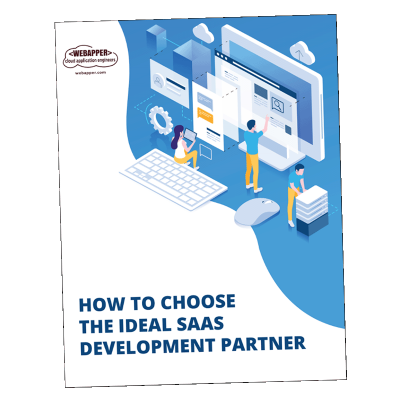Overcoming Challenges in SaaS Sales Cycles
As a company that works on several SaaS offerings, we’re well aware of the immense pressures on SaaS providers. Development is never-ending, finding qualified prospects keeps marketers working around the clock, and support shortfalls lead to churn. It’s a multi-front war. And one of the most pressing areas is sales, the lifeblood of the product. Assuming the idea is good, the product works, and marketing has built a pipeline of leads, then it’s up to the sales team to bring home deals. But sometimes sales takes time…so let’s take a look at SaaS sales cycles and explore ways to overcome obstacles to growth and success.
Challenges in SaaS Sales Cycles
Sales challenges vary depending on industry, target market, and product. The five most common and difficult challenges in SaaS sales cycles include…
Convincing Prospects of Your SaaS Value
SaaS solutions often require significant change in businesses workflows. Convincing prospects that your SaaS solution deliver value requires understanding their specific needs and effectively communicating how your product aligns.
- Clearly communicate your unique value proposition. Highlight how you address pain points and improve efficiency, productivity, or profitability.
- Offer demos or trials for prospects to experience benefits firsthand.
- Share case studies, reviews, and testimonials from customers to illustrate value.
Competition
SaaS markets are highly competitive with numerous vendors offering similar solutions. Differentiating your product is crucial. By understanding your competitors’ strengths and weaknesses, you can highlight your unique value proposition.
- Analyze your competitors to identify their strengths and weaknesses.
- Differentiate your solution from competitors by showcasing your unique features, benefits, and success stories.
- Build a library of testimonials and case studies.
Addressing Complex Buying Processes
Especially in enterprise opportunities, SaaS sales cycles can be lengthy and complex. Decision-making processes often involve extensive evaluations by multiple departments, lengthy contract reviews, and pricing negotiation. Navigating these complexities and aligning to the requirements of different stakeholders can be arduous.
- Understand the organizational structure and buying process of your prospects to tailor your approach.
- Identify key stakeholders early in the sales process and engage them directly.
- Educate stakeholders with whitepapers, webinars, and supporting materials that address common concerns and overcome objections.
Overcoming Budget Constraints
Budgets are almost always a hurdle. Organizations may need to justify the ROI of your SaaS solution. Effectively demonstrating how you reduce costs or drive revenue growth is essential.
- Articulate your ROI expectations. Use data and metrics to quantify the potential financial impact.
- Offer flexible, transparent pricing models to accommodate budgetary preferences.
Handling Implementation Obstacles
SaaS implementations often require integrations, data migration, and onboarding. Prospects may express concerns about potential disruptions or resistance to change from users. You can address such concerns with a clear implementation plan, strong customer support, and a smooth transition.
- Offer tutorials and documentation.
- Guide new customers through the implementation with effective onboarding and support.
- Assign customer success representatives to proactively address concerns.
Important Sales Cycle Metrics
Performance metrics enable organizations to analyze efficiency and identify areas for improvement. It’s important to track metrics relevant to your objectives. Industry metrics that illustrate sales cycles and provide insights include…
Sales Cycle Length
Measure the duration (e.g., in days) it takes for a prospect to move from initial contact to close. It helps assess sales process efficiency, identify bottlenecks, and develop forecasting models. SaaS sales cycles typically range from a few weeks to several months. Enterprise sales cycles tend to be longer, often extending beyond six months.
Conversion Rate
Measure the percentage of leads or prospects that successfully convert to paying customers. Conversion rate maps the effectiveness of lead generation, qualification, and sales efforts. Average conversion rates for qualified leads typically range between 20% and 30%, but it can vary significantly depending on product and industry.
Sales Velocity
Measure the speed at which deals move through the sales cycle. Factor in average deal size, conversion rate, and sales cycle length. Higher sales velocity indicates shorter sales cycles and better efficiency. While benchmarks can differ across industries, a healthy sales velocity often means closing deals within three to six months.
Customer Acquisition Cost (CAC)
Measure the average cost to acquire a new customer. CAC includes sales and marketing expenses divided by the number of customers acquired within a specific period. SaaS CAC varies widely, but on average, SaaS companies strive to keep their CAC below the lifetime value (LTV) of a customer, ideally with a ratio of at least 1:3.
Customer Lifetime Value (CLTV)
Measure total revenue generated by each customer over their entire relationship with your company. By comparing CLTV to CAC, you can determine the profitability of acquiring and retaining customers. CLTV can range from hundreds to several thousand dollars, depending on pricing, retention rates, and upselling.
Win Rate
Measure the percentage of opportunities that are won versus the total number pursued. Win rate provides insight into the quality of leads in the sales pipeline and effectiveness of the sales team in closing deals. Win rates in SaaS typically range from 20% to 40% — shoot for win rates above 30% to ensure a healthy sales pipeline.
Customer Churn Rate
Measure the percentage of customers who cancel or stop using your SaaS product within a given period. Churn reflects customer retention efforts and overall customer satisfaction. SaaS companies aim for average annual churn rates below 5%.
Tools for Optimizing Sales
SaaS sales tools should align with your needs, budget, and integration requirements. Conducting thorough research, considering customer reviews, and seeking recommendations from industry peers can help in selecting the most suitable solutions for you.
Customer Relationship Management (CRM)
CRM platforms like Salesforce and HubSpot help track sales interactions, manage customer relationships, and provide insights into customer preferences.
Sales Engagement Platforms
Tools like Outreach and SalesLoft helping sales teams streamline their outreach efforts and improve productivity with email automation, call tracking, and sales cadence management.
Video Conferencing & Webinars
Platforms like Zoom and Microsoft Teams facilitate virtual sales meetings, demos, and webinars.
Workflow Automation
Zapier, IFTTT, and Microsoft Power Automate enable automating complex, repetitive tasks, freeing up time for sales teams to focus on high-value activities.
Sales Analytics
Solutions like Tableau and Looker provide analytics tools to analyze customer data and track sales performance for better decision-making.
Customer Support
Help desk solutions like Zendesk and Intercom offer ticketing, knowledge bases, and live chat support.
Overcoming Challenges in SaaS Sales Cycles
As a SaaS development partner and provider, we understand the challenges faced by SaaS businesses. Sales cycles play a crucial role in any product’s success.
To overcome obstacles and drive growth, we must address key challenges such as convincing prospects of our SaaS value. This can be achieved by clearly communicating our unique value proposition, offering demos & trials, and sharing customer reviews. Competing in saturated markets requires understanding competitors, highlighting our differences, and sharing success stories. Complex buying processes demand tailored approaches and continuous stakeholder engagement. Budget constraints can be tackled by articulating ROI and offering flexible pricing. Handling implementation obstacles involves providing resources, support, and dedicated representatives. Tracking metrics like sales cycle length, conversion rate, sales velocity, CAC, CLTV, win rate, and churn rate provides insights into sales performance. Utilizing SaaS sales tools like CRM, sales engagement platforms, video conferencing, workflow automation, analytics, and customer service solutions can optimize the sales process and drive success.



Leave A Comment